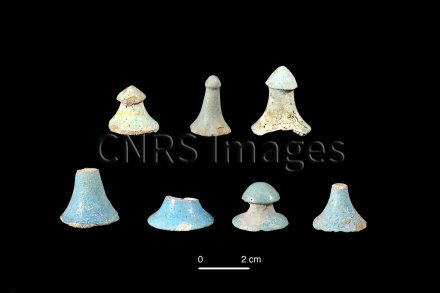Production year
2007

© Claude DELHAYE/CNRS Images
20100001_0261
Pions d'un jeu de senet en faïence égyptienne, début du Nouvel Empire, découverts sur l'allée processionnelle nord du Ramesseum. Nommé "Temple de millions d'années", car le culte funéraire du roi y était assuré pour l'éternité, le Ramesseum a été construit par Ramsès II (1279 à 1212 av. J.-C.) sur la rive occidentale du Nil à Thèbes (Egypte).
The use of media visible on the CNRS Images Platform can be granted on request. Any reproduction or representation is forbidden without prior authorization from CNRS Images (except for resources under Creative Commons license).
No modification of an image may be made without the prior consent of CNRS Images.
No use of an image for advertising purposes or distribution to a third party may be made without the prior agreement of CNRS Images.
For more information, please consult our general conditions
2007
Our work is guided by the way scientists question the world around them and we translate their research into images to help people to understand the world better and to awaken their curiosity and wonderment.